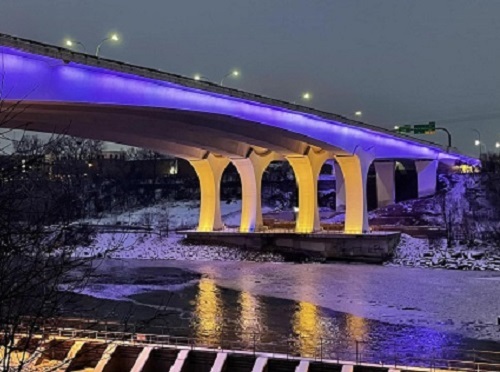The Minnesota Department of Transportation is placing new emphasis on climate change, equity, and health as part of the five-year update to its 2022-2041 Statewide Multimodal Transportation Plan or SMTP.
[Above photo by the Minnesota DOT]
The agency said the five-year update to its long-range SMTP outlines objectives, performance measures, strategies, and actions to help advance its vision of a multimodal transportation system that maximizes the health of people, the environment, and Minnesota’s economy. “Everyone deserves transportation options that work for them and their needs,” said Minnesota DOT Commissioner Nancy Daubenberger in a statement.
“The SMTP is a cornerstone to the important work that we and our transportation partners need to do in the near- and long-term to ensure our investments continue to deliver on our commitments to safety, economic vitality, and livability,” she added. “We look forward to working with partners statewide to implement the goals laid out in this updated plan.”
The SMTP evaluates the state’s entire transportation system, considers trends affecting transportation, and provides direction for the next 20 years. The updated 2022-2041 plan focuses on six objectives: transportation safety, system stewardship, climate action, critical connections, healthy equitable communities, and open decision-making.
In addition to the agency’s commitment to preserving the existing system, the SMTP also includes three new key emphasis areas:
- Climate: Shifting to a climate-friendly transportation system requires that the transportation system look, feel, operate, and be maintained differently in the coming decades. That includes decreasing annual greenhouse gas emissions from the transportation sector by 80 percent by 2040; ensuring that all new light-duty vehicles registered in Minnesota are zero-emission vehicles by 2035; reducing the number of vehicle miles traveled across Minnesota per capita by 14 percent by 2040; and integrating vulnerability identification and resilience into its planning and programming efforts.
- Equity: The plan includes several activities that embed transportation equity into the planning approach, including an equity review applied to all the draft strategies and solutions. That effort incorporates building internal capacity to advance transportation equity; enhancing analysis and evaluation for transportation equity in project selection and project development; collaborating with partners to evaluate and address equity impacts of transportation fees, fines, and fares; developing a measure of how much household income is spent on transportation; using a newly developed transportation equity statement of commitment to inform ongoing work.
- Health: Using transportation to improve health outcomes and reduce disparities by adopting the “Safe System” approach to transportation safety; increasing the percentage of state residents who walk or bicycle at least weekly to 60 percent by 2040; developing resources to mitigate urban heat islands; and developing measures for walking, bicycling and taking transit at a project- and program-level.
